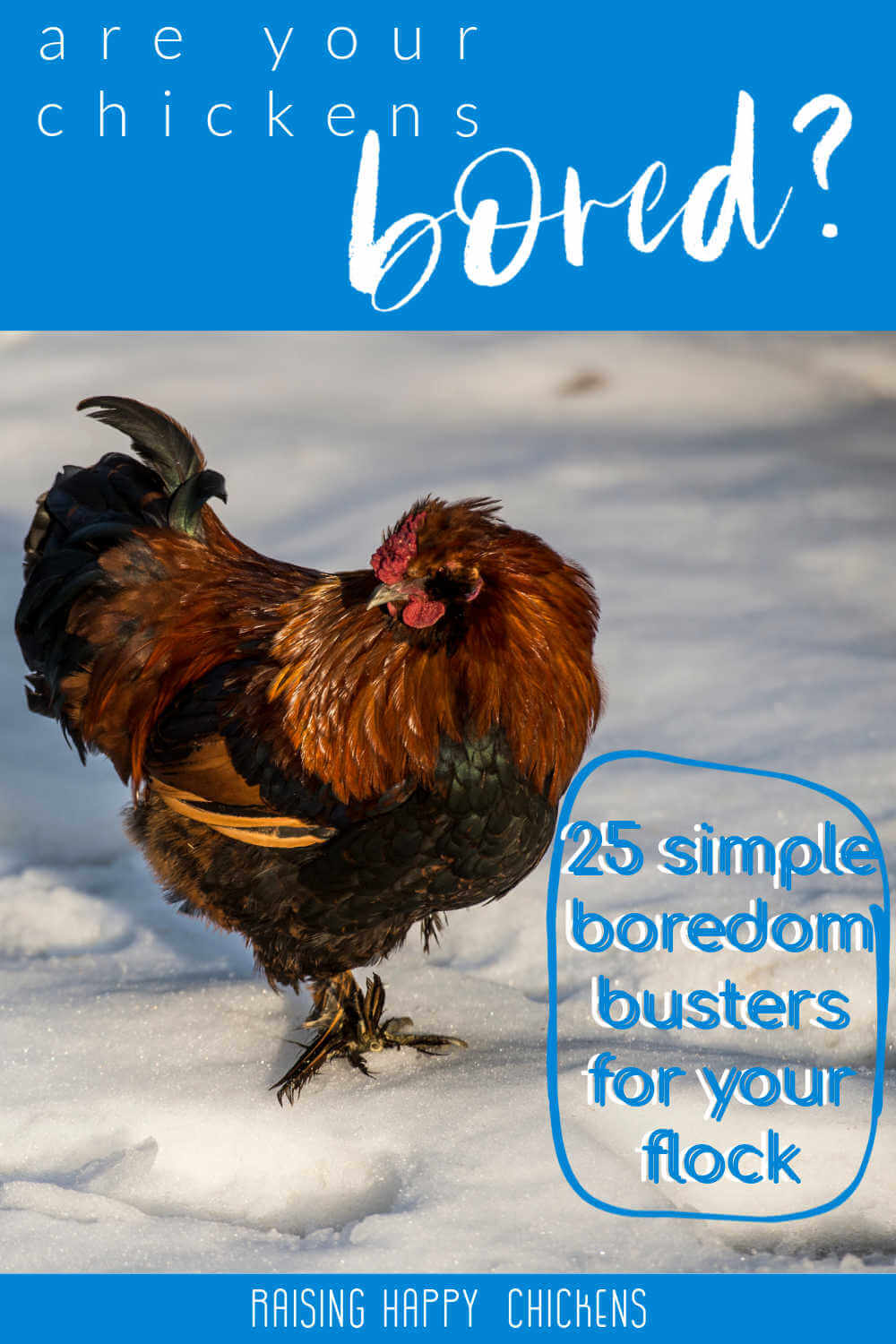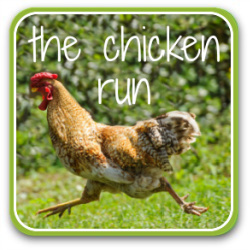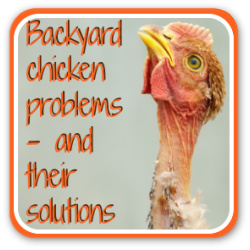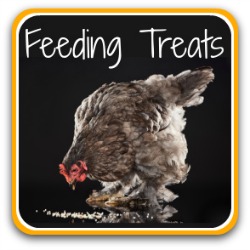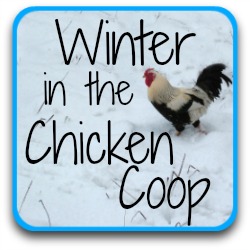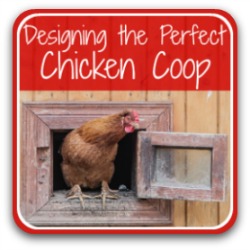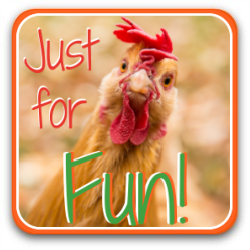Bored chickens? Here's how to help restore their va-va-voom!
Chickens are usually pretty self-sufficient. Give them food and drink, some land and a safe place to live and lay, and they're happy.
But there are times when a chicken's freedom can be seriously disrupted.
Bad weather, predators or even Avian Influenza (bird flu) can mean they need to be literally "cooped up" – enclosed in their coop.
That ends their ability to free range, cuts down access to bugs or healthy plants and weeds, and seriously limits being able to indulge in practices which are important to their welfare, such as dust bathing, socialising and general foraging.
Being unable to satisfy their welfare needs means your chickens are likely to end up being bored. And bored chickens can quickly become a real problem.
Egg eating, feather pecking, aggression, even depression - standing still staring into space, for example - are all examples of what can happen if chickens can't express natural behaviours(1,2).
Providing boredom busters can help lessen the problems. This article contains 25 of the easiest – and no need to spend a lot of money, because many of them are DIY.
Table of contents.
This article is split into three sections:
- food related boredom busters
- how to provide outdoor activities, and
- adding boredom busters within the coop itself in times of extreme lockdown requirements.
Some product links on this page are affiliates, which means that if you purchase a product through them I receive a small commission at no extra cost to you.
Food related boredom busters.
Be careful with this section. Although homemade chicken treats are excellent for keeping the flock occupied, too many can harm your chickens' health.
Use the fruit and veggie ideas particularly, and balance them with ideas from the other sections.
Fruit and vegetable treats.
If you don't have access to your own supplies, be sure to shop seasonally. Pumpkins, for example, are much cheaper after Hallowe'en. And sprouts can be grown whether or not you have access to outside space.
And have the courage to ask local greengrocers for any spoils: irregularly shaped items, for example, or fruit that's gone a little soft. They may not be saleable to humans, but they'll be fine for chickens.
1. Simplest of all: put out whole veg, or chop it into small pieces. Pumpkin works brilliantly – they'll spend hours with a single one! Just cut it in half and your flock will clean it out, seeds and all. And it's amazingly healthy for chickens – more details in this article.
2. Kill the swinging veg! Hunt out vegetables and fruit which hang easily. Attach to some strong twine, hang from a tree branch and let your flock loose.
Lettuce, cabbage, broccoli, cauliflower florets, whole corn on the cob and apples all work well.
This can work inside the coop as well as in the run. Make sure you clear up any leftovers to avoid rodents.
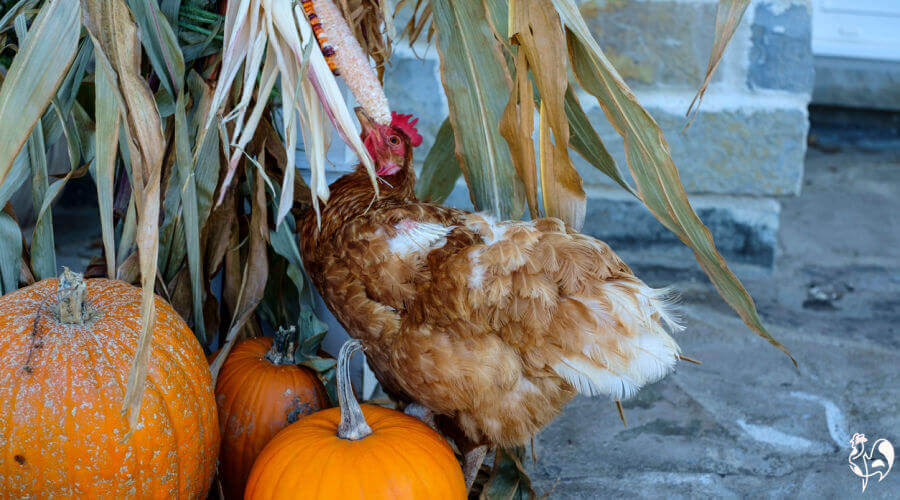 Hanging veg hidden under leaves provides hours of fun!
Hanging veg hidden under leaves provides hours of fun!3. Veggie football: if you're not sure about using string, you can buy a rolling container which will keep the flock occupied as they literally kick it around the run.
Want detailed information about which vegetables chickens can eat? Find it here!
DIY seed, oat and meat boredom buster treats.
4. Pine rolls: gather some pine cones. Roll in melted coconut oil and as it's hardening, press in some sunflower seeds. It will take the flock a good while to empty the cone.
5. Sprout some seeds: inexpensive and nutritious. These take three or four days to make, so use some of the other ideas while you're waiting. Details of how to sprout are here.
6. Home made seed blocks: these can be made with items you probably have in your store cupboard. Bulk make them and freeze for up to three months. Hang them inside or outside the coop to make them last longer.
Find my DIY recipes here and here.
7. High protein pie: this popular oat-based recipe can be cut into pieces and frozen so you'll always have some in stock. It's especially good if the temperature plummets. Feed on the ground.
8. DIY feed toy: take one plastic bottle - a used water bottle, for example. Use something sharp - a metal or a small drill bit, for example - to make holes at random points.
Fill with your chickens' ordinary seed and watch them kick it round the coop.
9. Snuffle ball: this is the commercially-made version of my DIY feed toy! It works if you have pellet food, which the home made bottle does not.
10. Hunt the seeds: scatter some seeds into your coop bedding. Foraging is an activity chickens need to do for their own welfare needs, and in winter when the ground is hard, or when they're confined to the coop, it's impossible.
Scattering a mix of seeds and mealworms into their bedding creates something like a natural foraging environment. Sunflower, pumpkin and sesame seeds work well, as do dried raisins.
11. Live insects: if you can stomach raising a mealworm farm, you'll have a ready stock of fresh insects for your chickens to enjoy. See this page for more information.
If not (and I never have...) think about buying some online. Waxworms and crickets are favourites.
And hunting down live creatures is something chickens love.
Providing outdoor DIY activities to counter boredom.
 No place to go - dig a path with something at the end!
No place to go - dig a path with something at the end!Many of the boredom busters for outside can be used inside the coop too, with some modifications.
If your chickens can go outside – for example, if they're not completely locked down because of Avian Influenza – there are ways of helping the the flock remain sheltered from the worst of the cold, wet weather. Which means they can still enjoy some outside time.
12. Cover at least a part of your run with a sturdy overhead tarpaulin. If it's a large run, choose just one corner.
Use more tarpaulins or thick cardboard tied to part of your fencing to give some protection from the wind.
13. If there's heavy snow on the ground, create a channel through it. The flock can at least get outside!
However, if there's mud, and if you want to protect your chickens' feet from frostbite, try adding gravel. And make yourself a note to invest in some drainage in the spring!
14. Log gym: give your flock some off the ground space. It helps keep their feet dry and at the same time provides entertainment. Take a look for logs, pallets, old ladders, boards – anything lying around.
Old wood also makes an ideal home for bugs and worms, so it's a double boredom buster: your chickens will love hunting them out!
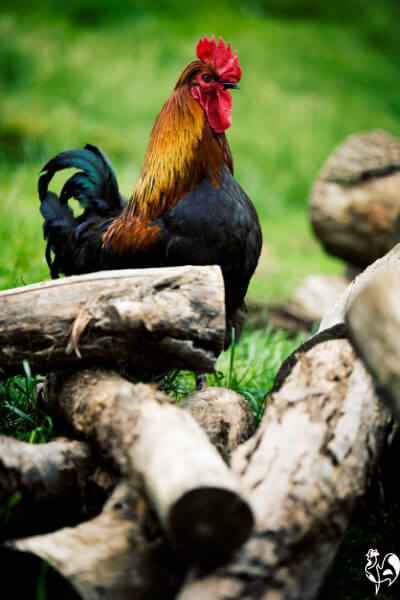 A pile of logs helps provide entertainment.
A pile of logs helps provide entertainment.15. Christmas trees: on the same theme, if you have a real Christmas tree don't dispose of it when the holidays are over. Lie it flat in your chicken run and let the chickens have some fun with it.
16. Make a merry-go-round (or should that be chicken-go-round?!): take an old tree stump and the wheel from a disused bicycle (including the spindle). Drill a hole on the log and insert the spindle. Concreting it in makes it more stable.
Don't worry about your chickens getting caught up in the spokes. They will choose to sit on the tyre which has a better grip.
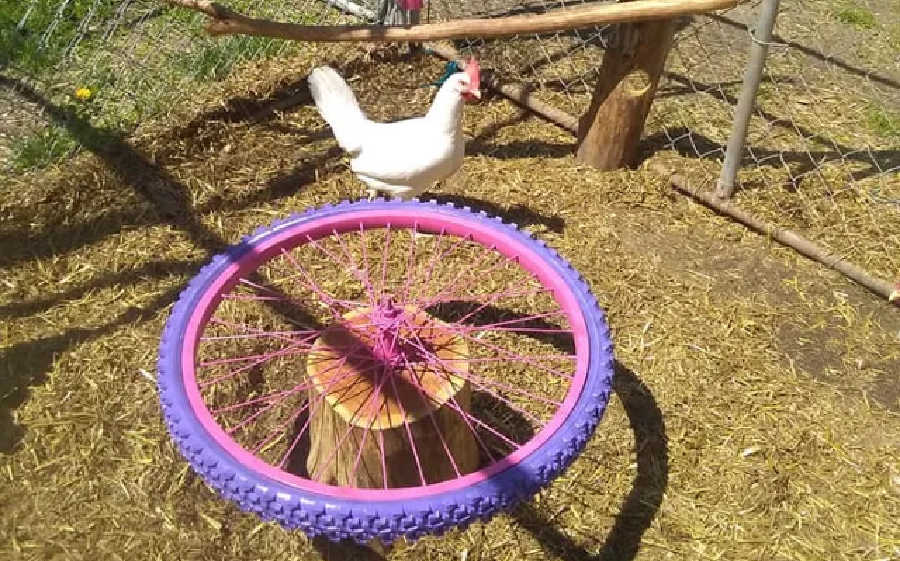
Indoor boredom busting.
It's unusual for chickens to have to be confined to their coop. Generally, they like to go outside even in unpleasant weather.
At times when the weather is seriously bad, though, or when there are "chicken lockdowns" because of Avian Influenza, when your flock must be kept inside, it's important to make sure there are ways for them to beat their boredom.
This is the situation in which you're most likely to see behavioural problems.
There are two ways of doing this: enhancing the coop itself, and creating DIY things for your chickens to do inside it.
Enhancing the coop.
17. Warmth: if your coop is big enough, add bales of hay round the inside of the walls. This has the double benefit of helping keep the coop warm, and giving your flock places to jump up and down.
Be ready to clean the top frequently though – they will roost there if given the chance!
18. Try the deep litter bedding method: this also adds heat to the coop, and gives your chickens a good litter in which to forage. It does take careful management - see details about the deep litter method.
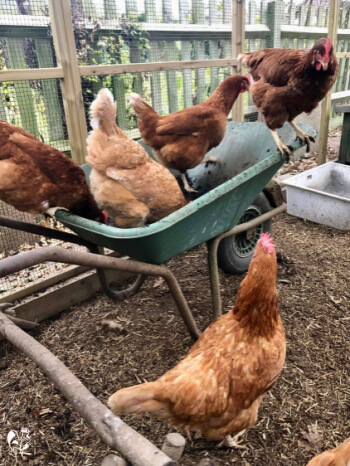
19. Dust baths: again, if your coop is large, create an indoor dust bath. Old wheelbarrows make a good container, as do used car tyres and large plantpots.
Fill them with a mixture of plant and garden compost and, if you use it, a handful of diatomaceous earth.
If you have a log-burning fire in your home use the ash too. Make sure it does not get wet – wet wood ash becomes sodium hydroxide (lye), which is caustic.
This can also be managed outside, as long as the container is covered. If it's left open, at best it will become a mud bath, at worst it will freeze over and become useless.
DIY chicken boredom toys.
20. Make a chicken swing: you can buy these online, but they're very easy to make. Take a piece of wood, make two holes, hang it using some heavy rope and hang from the ceiling.
Using these outside in the winter is virtually impossible – the wind will prevent chickens from trying them. In fact, my chickens won't try them at all.
21. Parrot toys: your local pet shop is likely to have a range of toys for parrot cages. These can work quite well for chickens too, as long as they're only used inside.
(I once bought a special ladder with bells and made the mistake of using it outside. It lasted about a month).
They're quite expensive but fun. Amazon have a range of toys specially for chickens.
22. Hang a xylophone: I've tried this and my chickens wanted nothing to do with it. Other people have had a lot of fun with it.
Which will your flock be? The only way to know is to try it out.
23. Hang a mirror: chickens find mirrors fascinating. They'll spend hours in front of them, presumably wondering where that other chicken that looks a lot like them goes.
So find an old mirror and hang it in your coop, at chicken height.
24. Hang old CDs: not got a mirror? Use old CDs instead. Hang them from the ceiling at chicken height. Outside, they can make deterrents to protect chickens from birds of prey. Inside, they become DIY chicken toys.
25. Sit with your flock. Having you sitting with them in the coop is different for your flock. Take a chair, or sit on the floor so they can hang out more easily.
This also gives you the opportunity to check their health.
Chickens don't have to be bored.
Any of these tips can be mixed with others to make sure that, even in the most severe of lockdowns, chickens can be entertained.
With any of these boredom busters remember: chickens aren't good at dealing with change. Any addition to the run or the coop that they're not familiar with, any new treat, will initially cause the sky to be falling.
Allow them to get used to one before introducing another.
Enjoy entertaining your chickens!
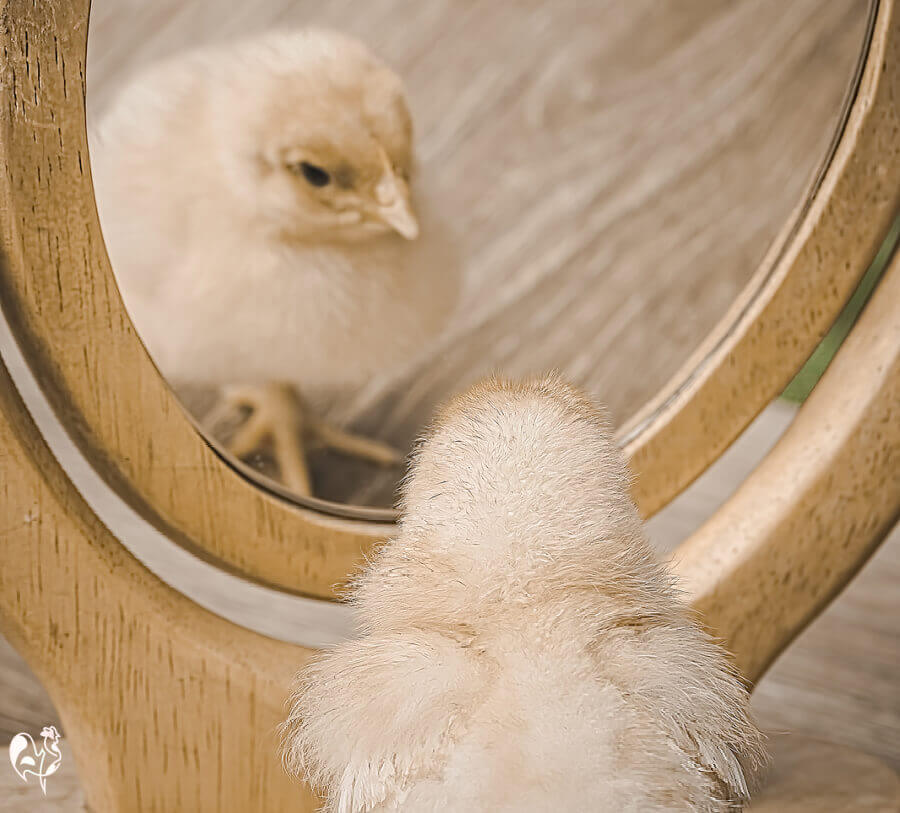
Other articles you may find useful.
Sources.
A lot of "facts" you'll find on the internet are often people's individual views, based on inaccurate information repeated from poor quality sources.
The information I provide in this article and others is based not just on my own experience, but on evidenced facts from scientific, peer-reviewed research and books from highly respected and experienced poultry keepers such as Gail Damerow.
Some of the trusted sources I have used in this article are these.
1. UK Government: Poultry: on-farm welfare. Pub. 2003; updated 2019.
2. RSPCA: Welfare standards for chickens. Pub. Royal Society for the Protection of Cruelty to Animals, 2002.
